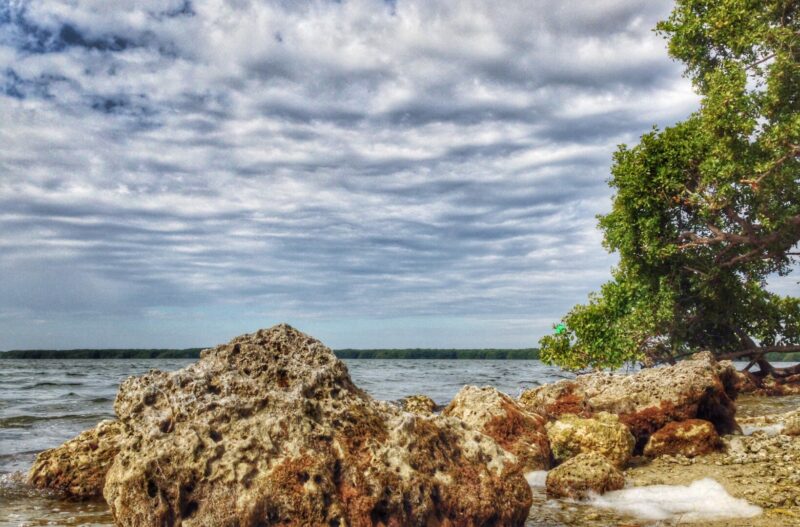Table of Contents Show
Watching a sunset over the Grand Canyon and hiking Angel’s Landing might be two items on your bucket list if you love America’s National Parks. Visiting Utah’s Mighty Five or standing before General Sherman may also make the cut. But do you have any east coast national parks on your list?
If not, you certainly need to consider venturing across the Mississippi to explore all the natural beauty these eight national parks have to offer. They’re each unique and well worth a road trip.
Let’s learn more!
How Many National Parks Are on the East Coast?
There are eight national parks on the east coast. These national parks offer very different experiences for visitors from the desert canyons of Arizona and Utah or the cliff dwellings of New Mexico.
In Florida, you’ll find Dry Tortugas National Park, Everglades National Park, and Biscayne National Park.
Maine, Virginia, and South Carolina each have one national park: Acadia National Park, Shenandoah National Park, and Congaree National Park, respectively.
On the border of Tennessee and North Carolina is the most visited national park in the country – the Great Smoky Mountains National Park.
Finally, the most recent addition to the national parks is the New River Gorge in West Virginia.
What Is the Eastern Most US National Park?
The easternmost national park in the United States is Acadia National Park in Bar Harbor, Maine.
One of the highlights of visiting Acadia National Park is witnessing the first sunrise in the United States.
Tickets are required to drive Cadillac Summit Road to experience this magical moment from May to October. You can purchase both sunrise tickets and daytime tickets on Recreation.gov for $6.
Sunrise tickets sell out quickly and can be reserved 90 days in advance and two days in advance when new tickets are released at 10:00 a.m. EST.
Only one reservation per vehicle is allowed within a seven-day period.

Can’t Miss National Parks on the East Coast
From the least accessible Dry Tortugas to the most accessible Great Smoky Mountains, there are so many different ways to experience the natural beauty of the East Coast.
You won’t find red rocks or canyons of rainbow colors here. Instead, you’ll find lush forests, swampy wetlands, and beautiful beach views.
Plus, you’ll encounter wildlife within the boundaries of these east coast national parks that you won’t find anywhere else in the country.
1. Acadia National Park – Maine
Best Time to Visit: High tourist season is in the summer months, so traffic will be heavy with crowded trails.
If you can visit during the spring or fall, you’ll avoid congestion while still being able to experience the beauty of Acadia in comfortable weather conditions.
About the Park: One of the top 10 most visited national parks in the country, Acadia National Park welcomes 3.5 million visitors each year. There are over 150 miles of hiking trails and 45 miles of carriage roads.
Unique to this New England National Park, these carriage roads tell a history unlike any other in America. Popular activities include biking, hiking, birdwatching, stargazing, and horseback riding.
Visitors relax on cliffs overlooking the crashing waves of the Atlantic Ocean. There’s also so much history within the boundaries of the park. Learn about the carriage road system and the engineering of the motor road system.
Visit lighthouses and historic bridges. If you have a bucket list of places to visit, Acadia National Park needs to be on it.
Keep in Mind: Consider camping at Acadia on your next getaway! Here’s Everything You Need to Know About Acadia National Park Camping.
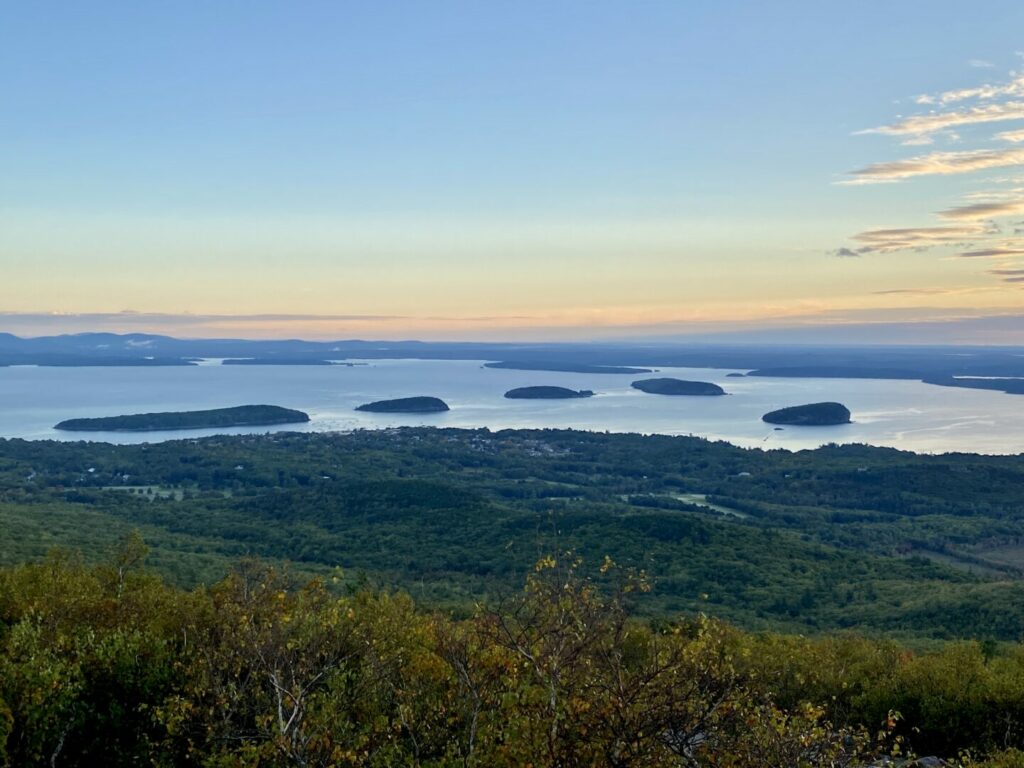
2. Everglades National Park – Florida
Best Time to Visit: Winter is the best time for wildlife viewing because of the comfortable temperatures. December to April is the dry season.
It’s also snowbird season, so lots of other travelers will greet you. Summers in southern Florida get extremely hot. It’s also the rainy season, which means lots of mosquitoes.
About the Park: On the other end of the east coast is Everglades National Park, with 1.5 million acres of mangroves, pinelands, and tropical hammocks all in one area of Florida.
It’s a stark contrast to Acadia National Park. Instead of lush forests and rocky cliffs, you’ll see a subtropical wilderness. This change of scenery also means a change in wildlife.
During your visit to the Everglades, you’ll probably spot an alligator or two and a pod of manatees.
There are 360 species of birds. Plantlife is also abundant and diverse here. Because of the rainfall, proximity to the coast, and temperate and tropical climates, you’ll find 39 native orchid species and acres filled with Muhly grass or seagrass.
It’s no wonder Everglades National Park has also been named a World Heritage Site, an International Biosphere Reserve, and a Wetland of International Importance.

3. Dry Tortugas National Park – Florida
Best Time to Visit: Anytime is a good time to visit Dry Tortugas. The Florida Keys are heavily visited during all seasons but more so in the winter when the snowbirds arrive.
The temperatures will be quite toasty in the summer, but you’re on the water where you can refresh and relax.
About the Park: Another popular but much less accessible Florida park is Dry Tortugas National Park. If you’re planning to visit, make sure to book your seaplane or boat ride early and plan to spend hundreds of dollars on your fare.
This national park lies 70 miles west of Key West and is home to Fort Jefferson, a 19th Century fort. Dry Tortugas National Park is also home to an abundance of marine wildlife, which is why snorkeling is a common activity here.
There are also beautiful coral reefs that harbor lobsters, sponges, sea stars, and more marine life. It’s one of the least-visited national parks due to its remote location, but if you can afford a charter, it’s well worth adding Dry Tortugas National Park to your bucket list.
4. New River Gorge National Park – West Virginia
Best Time to Visit: The fall and spring are the best times to visit and witness migratory birds flying through the gorge. The blooming flowers and shades of fall are beautiful in both seasons and offer spectacular opportunities for photographers.
About the Park: Over 70,000 acres along the New River are now protected as of January 2021. It went from a national river designation to a national park and preserve designation.
The park tells the story of the Native Americans, from the pioneers to the miners and loggers. Hiking or driving through this national park provides guests with glimpses into history.
Visit Nuttallburg, the site of a once-bustling coal mining town. Learn about the history of the McKendree Hospital and the West Virginia Home for the Aged and Infirm Colored Men and Women.
As you venture about, expect to see white-tailed deer, raccoons, bald eagles, peregrine falcons, and copperheads. It’s an area of historical significance and natural beauty.
Keep in Mind: Do you have a National Park Pass? If not, you’re wasting money!
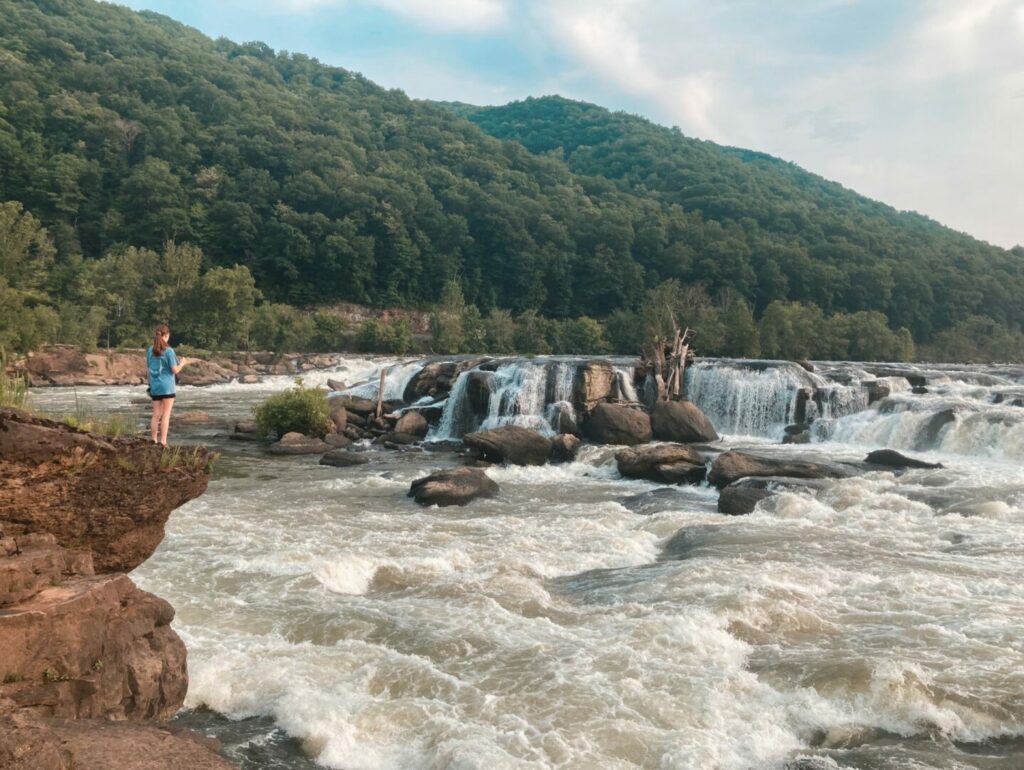
5. Great Smoky Mountains National Park – Tennessee and North Carolina
Best Time to Visit: Great Smoky Mountains National Park is one of the few parks you can visit any time of the year. The weather remains mild, and the roads are easily accessible.
Spring and fall are generally the prettiest with the blooms and changing colors. Campers flock to the area campgrounds during the summer for vacations.
About the Park: The most visited National Park, the Great Smoky Mountains National Park, welcomes over 11 million visitors each year, well beyond the 4.6 million visitors of the second most visited national park at the Grand Canyon.
Cades Cove is a popular destination with some of the best opportunities for wildlife viewing and a beautiful, scenic drive along Cades Coves Loop Road.
The land also tells the story of the Cherokee Indians and their removal in the 1830s. In the early 1900s, the lumber industry arrived, and logging towns emerged. When the area got the designation of a national park in 1934, it fell under the protection from deforestation.
The largest collection of historic log structures in the East is in Great Smoky Mountains National Park.
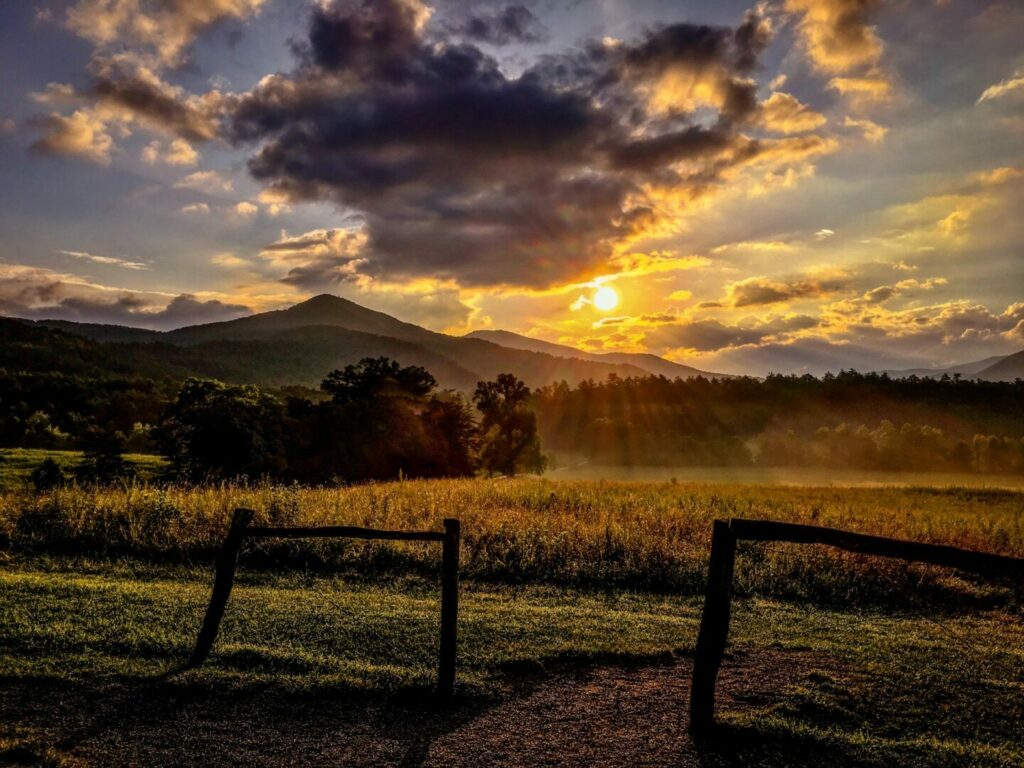
6. Shenandoah National Park – Virginia
Best Time to Visit: Like the Great Smoky Mountains National Park, you can enjoy Shenandoah National Park year-round. The colors and blooms are beautiful in spring and fall, but the temperatures remain mild and comfortable even in the summer and winter.
About the Park: Located about 75 miles outside Washington, D.C, Shenandoah National Park is home to 200,000 acres of varied plant life and wildlife. Over 190 bird species, 50 mammal species, and 40 fish species call this area home.
Fishing and hiking are quite popular in Shenandoah National Park. Over 70 streams contain the native eastern brook trout.
The park also has over 500 miles of hiking trails. One of the most popular trails leads to Old Rag Mountain and requires a timed entry ticket you can purchase on Recreation.gov. It’s well worth it to experience the stunning 360-degree views.
7. Biscayne National Park – Florida
Best Time to Visit: Florida’s third National Park isn’t unlike the previously mentioned two. Summers are hot and almost unbearable.
Winters bring the snowbirds but offer comfortable weather conditions to enjoy the park’s beauty and see the wildlife.
About the Park: Protected in 1968 as a national monument, Biscayne became a national park in 1980. Researchers found evidence of prehistoric tribes here as well as numerous shipwrecks.
There are assumptions that this area of Florida was a large, dry savannah 10,000 years ago where native peoples hunted mastodons and other animals of that period.
Biscayne National Park is also home to four distinct ecosystems: manatees, sea turtles, wading birds, alligators, and crocodiles. Fishing, boating, canoeing, and kayaking are common outdoor activities.
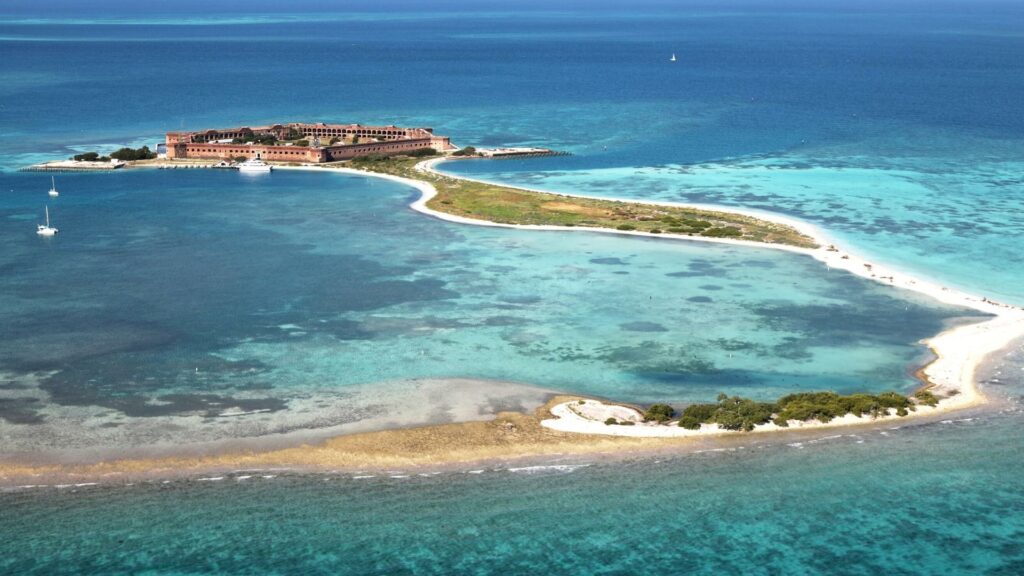
8. Congaree National Park – South Carolina
Best Time to Visit: It’s best to visit Congaree National Park in the spring or fall when the weather is most comfortable.
Summers can be wet and humid in South Carolina, and the winters may prove difficult to see the wildlife even though the weather is fairly mild. Flooding is also common in the winter.
About the Park: According to the National Park Service (NPS), “The largest intact expanse of old-growth bottomland hardwood forest remaining in the southeastern United States” is in Congaree National Park. Hiking is very popular as there are 25 miles of trails and over 2 miles of boardwalks.
Canoe down Cedar Creek to experience the scenic beauty of the forest and the wildlife. You might catch sightings of white-tailed deer, gray foxes, tree frogs, snakes, and more. The Congaree River Blue Trail provides paddlers with 50 miles of river that extends from Columbia to Congaree National Park. There is no entrance fee to visit this National Park.
Pro Tip: Want to learn more about the different types of park service designations? There are over 400! Read Decoding the National Park System to learn more.

Which East Coast National Parks Will You Visit Next?
Perhaps a bit less popular than the national parks in the western states, these east coast national parks are still well worth a visit.
The marshlands, rivers, and forests are home to endangered species not found anywhere else in the world. If you haven’t considered visiting one of these east coast national parks, you need to start making your road trip itinerary now.
Will you start in Maine and work your way down to Florida? Or will you hit the Keys in winter and travel up to experience summertime in Maine?




